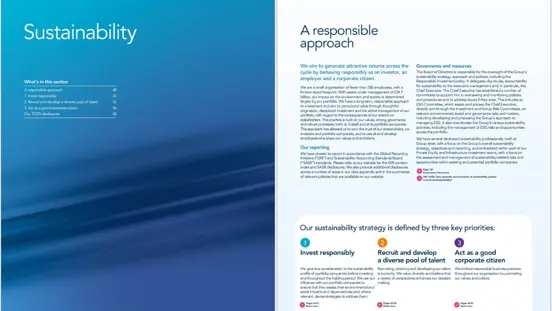Environment
With fewer than 250 employees globally, 3i has a relatively small direct impact in terms of the environment and other sustainability issues.

Our impact on the environment is determined largely by our portfolio. We are committed to minimising our direct and indirect impact on the environment and, in 2024, set our near-term science-based GHG emissions reduction targets, which cover our own operations and our portfolio.
Scope 1 & 2 (own operations)
3i Group plc commits to reduce its absolute Scope 1 and 2 (market-based) GHG emissions by 42% by FY2030 from a FY2023 base year.
Scope 3 (portfolio emissions)
3i Group’s portfolio targets cover 82% of its total investment and lending1 by invested capital as of FY2023.2 3i commits to:
- 31% of its listed and eligible Private Equity portfolio by invested capital setting SBTi validated targets by FY2028 and 100% by FY2040 from a FY2023 base year
- A 68% per megawatt-hour (“MWh”) reduction in GHG emissions from the electricity generation sector within its eligible portfolio by FY2030 from a FY2023 base year
- Continue providing electricity generation project finance only for renewable electricity through FY2030

1 The target language makes reference to “lending activities”. 3i does not engage in lending activities, but had to word its targets in alignment with the SBTi’s standard language for Financial Institutions.
2 As of FY2023, required activities made up 82% of 3i Group’s total investment and lending by invested capital while optional activities made up 3% and out of scope activities made up 15%.
Information on our operational and portfolio emissions is available in our latest TCFD Disclosures.
Sustainability report
Read more about our commitment to sustainability in our Annual Report 2024


